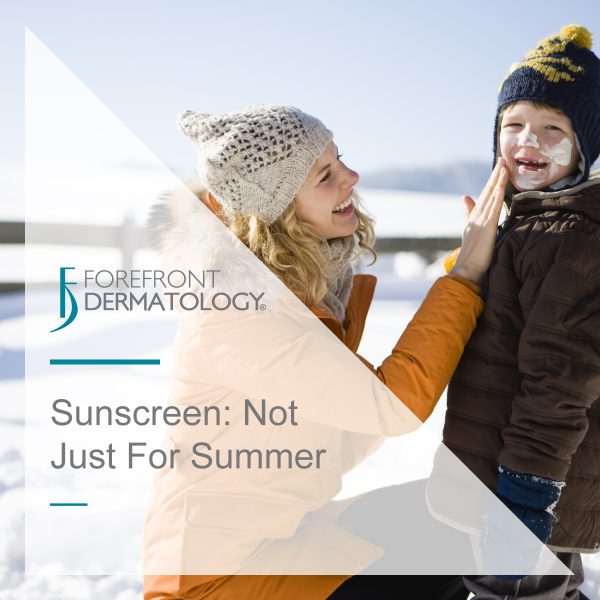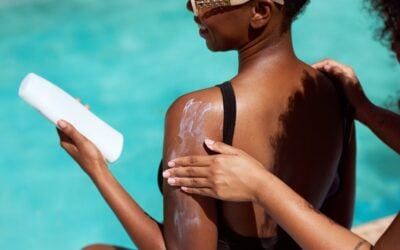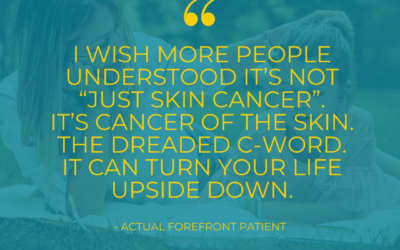
Sunscreen is the jack of all trades when it comes to a skin care product. It protects against damaging UV rays that cause skin cancer and premature aging, while also acting as a moisturizer. While many individuals wear it regularly in the summer months, the reality is that we need to be wearing it every single day of the year. Rain or snow, sunshine or cloudy days, the sun’s UV rays are always present.
Our very own Dr. Matthew Fanelli, board-certified dermatologist with Forefront Dermatology in Fond du Lac, Wisconsin answered the some of the top asked sunscreen questions dermatologists get:
What if my winter vacation is going skiing, do I really need sunscreen?
From skiing and snowboarding, to ice skating and bobsledding or even shoveling your driveway, all outdoor winter activities done put you at risk for sunburn and windburn. It’s a common misconception that windburn is its own condition, but in reality it’s actually sunburn resulting from prolonged exposure to the sun and wind. Because of the chill in the air, you might not even consider that sunburn is a risk you should worry about. The UV exposure is strong year-round and increased when snow is on the ground for it to bounce off of. Sun exposure is the most preventable risk factor for skin cancer. Apply a broad-spectrum sunscreen to any part of your skin that’s not covered by clothing.
Should I Choose Chemical or Physical Sunscreen?
Chemical sunscreens contain organic compounds, such as oxybenzone, octinoxate, octisalate and avobenzone. Chemical sunscreens are absorbers of UV rays as they attempt to enter the skin. Physical sunscreens contain active mineral ingredients, such as titanium dioxide or zinc oxide, which work by sitting on top of the skin to deflect damaging UV rays away from the skin. They each come with their own set of pros and cons. Chemical sunscreens tend to be thinner and spread more easily, but require around 20 minutes after application before they begin to work. Physical sunscreens protects your skin as soon as you apply it and are less likely to clog pores and irritate the skin, but do require more frequent re-application.
Is one application type better than another?
Sunscreen comes in many forms: gel, cream, lotion, stick and spray. I always advise my patients that the best sunscreen is the one you’ll actually wear. Each type of sunscreen comes with its own advantages and rules for applying. Creams work well if you have dry skin, especially on your face. Lotions work best when needing to apply over a large area. Gels work great in hairy areas such as the scalp or chest. Sticks are useful in applying sunscreen around the eyes. Sprays are convenient to apply on active children. When it comes to application rules, stick sunscreens require four passes back and forth to ensure you are getting the correct amount of coverage followed by rubbing it in to even out the layer. With a spray sunscreen, hold the nozzle close to your skin and spray generously. A good rule of thumb is once the skin is glistening you have applied enough. After applying, rub in thoroughly to get even coverage. When it comes to a standard cream, gel or lotion sunscreen adults need at least a shot glass worth of sunscreen to cover the entire body. Apply thoroughly on all exposed areas of the body and rub in until the “white” color fades away.
Skin Struggles?
At Forefront Dermatology, we know that life is all about the moments when you don’t need us. That’s why we’re here for all the moments when you do. We offer comprehensive and compassionate care for all skin conditions and create customized treatment plans for all stages and ages – even the tiniest of patients! Find a dermatologist near you today.





